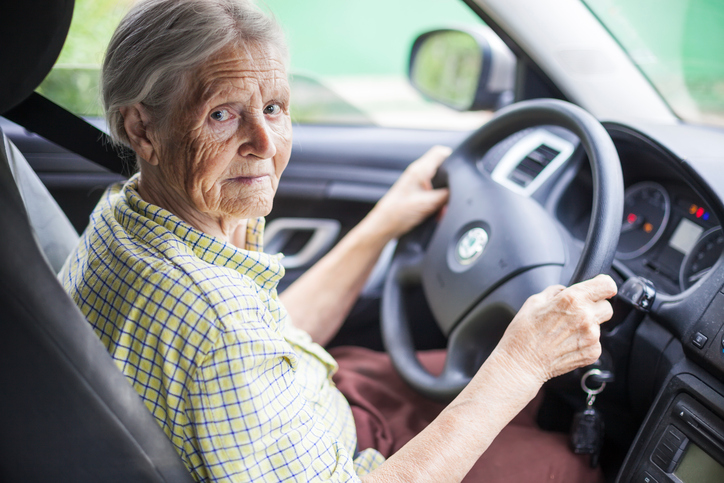Not many events have the potential to cause as much emotional strain as talking to a senior parent when their ability to drive is compromised. “It’s not an easy conversation for young people to talk to their parents about when it’s time to stop driving…but it’s an important conversation to have, that’s for sure,” says Nancy Cain, a spokeswoman for AAA.
“The talk” is looming large for millions of children of Baby Boomers whose parents are now entering their 70s and 80s. Consider these statistics:
- In 2014, vehicle accidents killed more than 5,700 older adults and injured more than 236,000. Each day, on average, crashes kill 16 seniors and injure 648 more.
- USA Today reports that by 2030, 85% – 90% of the 70 million Americans older than 65 will be driving. Compare that to 2009 when only 33 million licensed drivers were older than 65.
To help you navigate this potentially difficult conversation, here are some considerations to keep in mind:
Address the issue promptly
It is easy to put off difficult conversations. Procrastination could be the difference between life and death for your loved one and others on the road.
Know the signs
The AARP lists 10 signs that indicate a person’s driving skills may need to be addressed:
- Crashing or frequent close calls
- Finding dents or scrapes on the car, fences, mailboxes and garage doors at home
- Having trouble following traffic signals, road signs and pavement markings
- Responding more slowly to unexpected situations or confusing gas and brake pedals
- Misjudging gaps in traffic at intersections and on highway entrance and exit ramps
- Experiencing road rage or causing other drivers to honk or complain
- Becoming distracted or having difficulty concentrating while driving
- Having a hard time turning around to check the rear view while backing up or changing lanes
- Receiving multiple traffic tickets or warnings
Discover the Problem
Mark Hornbeck, spokesman for AARP Michigan, mentioned in a USA Today interview, concluding that older drivers are a problem is “not a jump that people should make. Driving skill is more related to health than it is to age. There’s no magic age at which everyone needs to give up their keys. It’s a health-related issue”.
Ask the driver if they have experienced any problems while driving and, if so, what do they think the source of the problem is. Don’t hesitate to bring a health care professional into the conversation to offer a professional opinion (see #9).
Empathize
Understand that this is a major life change for the senior during a time that many things may seem out of their control. Restricting or limiting their ability to drive might magnify the frustrations, fears and loss of control that can accompany growing old. Geriatric expert David Solie explains in his book How to Say It to Seniors, since elderly people face so many losses at this stage of life, they tend to rigidly control the few things they can.
Treat them like an adult. You should involve them in identifying problems and finding solutions. Avoid taking unilateral action unless the senior is suffering from Alzheimer’s, dementia or other health problems which affect their decision making skills.
Have realistic expectations. Understand that the transition from being a driver who has the freedom to go anywhere at any time to someone who has limited transportation options is a process and not an event. If possible, develop a plan with the senior that adapts to their changing skill level. For example, a first step may be to limit driving to daylight hours and good weather. Eventually, it may be necessary to limit travel within a 5-mile radius for essential errands only. No single plan works for every individual and you must carefully design one to operate within the driver’s capabilities and needs.
Know your role. Unless there are health-related issues that affect the senior’s decision-making capabilities, your role should be that of a facilitator. How can you help them identify problem areas and solutions? Avoid imposing solutions on the senior.
Provide options. Familiarize them with other transportation options such as buses and senior transportation services. App-based options, such as Uber and Lift, may also work. Once you have identified possible options, explain how they work and then go with the senior the first time or two. Install the Uber app for them and schedule a ride to the park.
Consider bringing a health professional into the conversation. A doctor can provide an objective evaluation of a senior’s ability to drive. It is also an opinion which many seniors will respect.
Have them take a safe driving course. Taking part in a safe driving course is a good idea for anyone, but especially for seniors. Spending dedicated time reviewing safe driving habits will translate to a safe driving experience on the road. Seniors can take an online course from the comfort of their home. Take a few minutes to explain what the course is and help them enroll. One good option is DriveSafeOnline.org. After taking the course, discuss it with them. Ask if they think they may have any difficulties with the safe driving procedures explained in the course.
Just as every person is different, every conversation with a senior about their driving will be different. Take your time. Remember that your only goal is to keep them and other drivers safe.

Patrick M. is Editorial Director for the always expanding DriveSafe Online library of courses. With over two decades of experience developing award-winning training, he now focuses on innovating online driver safety training. Pulling from his background in journalism, he steers the wheel behind the creation of top-tier content that promotes a better journey—whether on the digital highway of learning or the real roads we travel every day.
